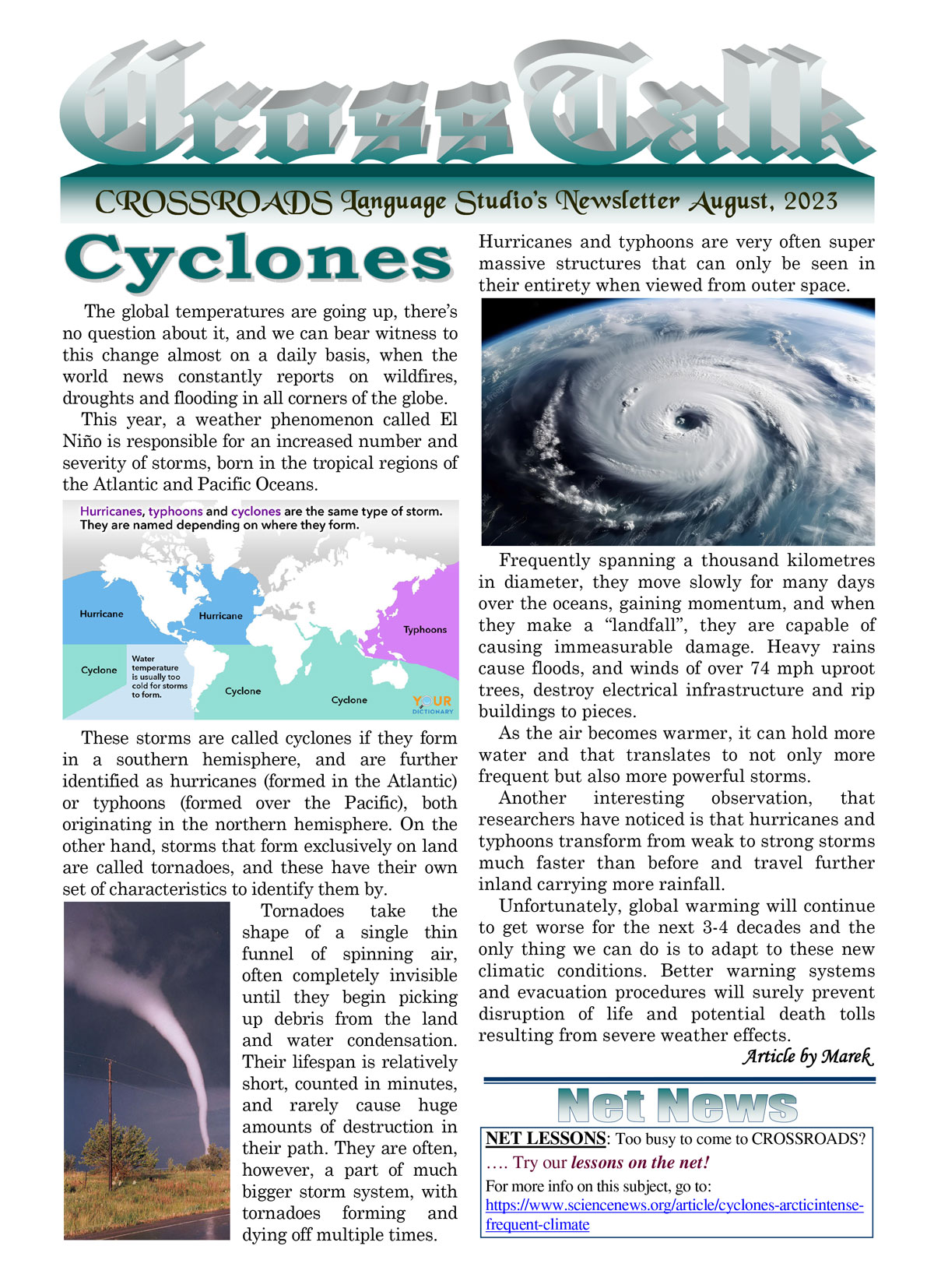CROSSROADS Language Studio’s Newsletter August,2023 Cyclones

The global temperatures are going up, there’s no question about it, and we can bear witness to this change almost on a daily basis, when the world news constantly reports on wildfires, droughts and flooding in all corners of the globe.
This year, a weather phenomenon called El Niño is responsible for an increased number and severity of storms, born in the tropical regions of the Atlantic and Pacific Oceans.
These storms are called cyclones if they form in a southern hemisphere, and are further identified as hurricanes (formed in the Atlantic) or typhoons (formed over the Pacific), both originating in the northern hemisphere. On the other hand, storms that form exclusively on land are called tornadoes, and these have their own set of characteristics to identify them by.
Tornadoes take the shape of a single thin funnel of spinning air, often completely invisible until they begin picking up debris from the land and water condensation. Their lifespan is relatively short, counted in minutes, and rarely cause huge amounts of destruction in their path. They are often, however, a part of much bigger storm system, with tornadoes forming and dying off multiple times
Hurricanes and typhoons are very often super massive structures that can only be seen in their entirety when viewed from outer space.
Frequently spanning a thousand kilometres in diameter, they move slowly for many days over the oceans, gaining momentum, and when they make a “landfall”, they are capable of causing immeasurable damage. Heavy rains cause floods, and winds of over 74 mph uproot trees, destroy electrical infrastructure and rip buildings to pieces.
As the air becomes warmer, it can hold more water and that translates to not only more frequent but also more powerful storms.
Another interesting observation, that researchers have noticed is that hurricanes and typhoons transform from weak to strong storms much faster than before and travel further inland carrying more rainfall.
Unfortunately, global warming will continue to get worse for the next 3-4 decades and the only thing we can do is to adapt to these new climatic conditions. Better warning systems and evacuation procedures will surely prevent disruption of life and potential death tolls resulting from severe weather effects.
Article by Marek
CROSSROADSのNews letterをPDFでダウンロード
CROSSROADSのスタッフから、最新のトピックスやメッセージなどを毎月お届けしています。クロスワードパズルなどのコーナーもあります。






